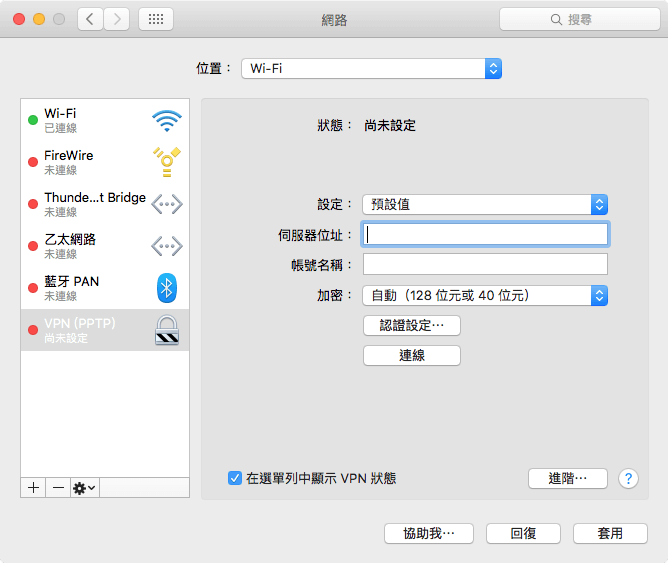
- #PPTP CLIENT FOR MAC OS X HOW TO#
- #PPTP CLIENT FOR MAC OS X UPDATE#
- #PPTP CLIENT FOR MAC OS X SOFTWARE#
- #PPTP CLIENT FOR MAC OS X PASSWORD#
- #PPTP CLIENT FOR MAC OS X TV#
Now te function and the alias: alias IP='wget -qO- echo -n' bashrc file, and reload the file with: #. profile) and add the following ( note, it is important having created the alias IP with the below content).
#PPTP CLIENT FOR MAC OS X SOFTWARE#
Note: you need additional software installed in your router like curl, bash, awk, wget, nslookup, etc…Īfter enabling bash, you need a bash variable with the name of the VPN server you are trying to connect to: # server=Įdit your preferable file (.bashrc or. I prefer this option as it is quick and easier. Now the script, which is not a script, but a bash function. # echo 200 duckdns > /etc/iproute2/rt_tables # echo 201 novpn > /etc/iproute2/rt_tables
#PPTP CLIENT FOR MAC OS X HOW TO#
I will show you how to do it in both ways with just one script.
#PPTP CLIENT FOR MAC OS X TV#
#PPTP CLIENT FOR MAC OS X UPDATE#
If you need some automated way of enabling disabling and also include some routes outside of the VPN (i.e to update your public IP in duckdns for instance, instead of the public IP of your VPN, you have to redirect some traffic outside of the VPN in two ways. Please stop reading here, and do not continue doing any other change, just take the below script, remove all the things related to the routing outside of the VPN, and use adapt it for your needs). If at this point, you do not know what I am talking about. If you continue reading, you will need deep knowledge of routing tables, what happens after you are in a VPN, or just how to deal with more than just one interface (i.e having an OpenVPN server in the same hosts which is accessing to another VPN as client, or just how to login in your public ISP IP when you are redirecting all the traffic into the VPN). # echo "d strong-vpn" > /var/run/xl2tpd/l2tp-control Just, stop it and run it again as explained before. So your interface would be now without IP setup. Now go to your Firewall settings and create a new Firewall zone:įill only Allow forward from source, including the interfaces you want to allow masquerading from (i.e local lan, any other local interface, and, if you have it as me, any other VPN server interface you have running in your router if so.Īfter the Firewal has been applied, the following command has been run (yo do not have to do it). Remember to keep the Assign firewall empty, we will create it later: Note: keep the protocol in Unmanaged, and if you have already started it up (not recommended yet), select ppp0 in “Cover the following interface”, or just write ppp0 in the selection box To do so, it is time to create the interfaces for the Firewall.Ĭreate the interface with the following details. Once you have first time created the interface (it will be ppp0), you have to define the interface within luci tool to properly set up the Firewall rules and allow masquerading in that new network. # echo "c strong-vpn" > /var/run/xl2tpd/l2tp-control Do not run remotely unless you have another way of connecting to the local network IP of your router”!!)
#PPTP CLIENT FOR MAC OS X PASSWORD#

Now we will edit the following files and we will empty them replacing any content with the following. Configuring strongswan-mod-socket-default.Ĭonfiguring strongswan-mod-kernel-netlink.Ĭonfiguring strongswan-mod-xauth-generic.


 0 kommentar(er)
0 kommentar(er)
